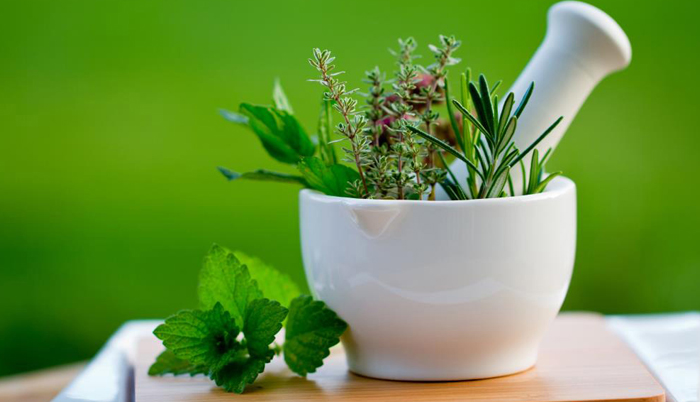![]() Home > Health
Home > Health
Research Confirms Folk Uses Of Medicinal Plants In Pakistan

![]() February 18th, 2021 | 15:54 PM |
February 18th, 2021 | 15:54 PM | ![]() 346 views
346 views
PAKISTAN
The use of plant parts to relieve or treat ailments is something that’s still practiced even today. Asian countries like Pakistan, India and Bangladesh are known for their use of traditional herbal remedies in various forms, such as powders, decoctions, infusions or poultice.
Despite advancements in modern medicine, many people still rely on these natural medicines for various reasons, primarily because of their safety compared to conventional medications. While synthetic drugs are known to cause plenty of adverse effects, herbal medicines have been reported to cause relatively fewer or milder side effects — sometimes, even none. Herbal medicines are also more easily accessible and cost cheaper than modern medications, making them more viable options for people living in rural areas, especially in developing countries.
In a recent study, researchers from China, Pakistan and the U.S. conducted a quantitative assessment of the ethnobotanical use of plants by the local peoples residing in the Chenab River area. The Chenab River originates in the state of Himachal Pradesh in India and flows into Punjab, Pakistan. To this day, local communities living in the Chenab wetland still depend on traditional remedies for all of their medicinal needs.
The researchers reported their findings in an article published in the Journal of Ethnobiology and Ethnomedicine.
The Chenab area in Pakistan is home to a diverse collection of medicinal plants
According to the researchers, the Chenab riverine area is rich in vegetables, fruits, fodder species and medicinal plants. Because of this, its local inhabitants possess considerable knowledge of plant species that can be used to treat various diseases. The researchers thus decided to make an inventory of the plants present in the area and document their medicinal applications.
From 2014 to 2015, the researchers collected ethnobotanical data from different parts of the Chenab River wetland, namely, Mandi Bahauddin, Gujranwala, Gujrat, Sargodha and Sialkot, using semi-structured interviews. They used quantitative indices like informant consensus factor (ICF), relative frequency of citation (RFC), relative importance level (RIL), use value (UV), fidelity level (FL) and corrected fidelity level (CFL) to analyze their data.
The researchers reported a total of 129 medicinal plant species belonging to 112 genera and 59 plant families, 51 percent of which were composed of herbs. Grass, or Poaceae, was the leading family with 13 species, and their leaves were their most frequently used parts (28 percent). The locals mostly used herbal medicines in the form of powder or decoction, and these remedies were mostly taken orally.
The most utilized plants medicinally were Withania somnifera (ashwagandha), Solanum surattense (yellow-fruit nightshade), Solanum nigrum (black nightshade), Azadirachta indica (neem), Ficus benghalensis (banyan fig), Morus nigra (black mulberry), Morus alba (white mulberry), Polygonum plebeium (common knotweed) and Tribulus terrestris (puncture vine). They had the highest UV, RFC, RIL, FL and CFL values.
Ashwagandha is known for its ability to reduce stress and anxiety, fight depression and boost male fertility. The yellow-fruit nightshade, meanwhile, is used to treat bronchitis, cough, constipation and gonorrhea. Its relative, the black nightshade, is commonly used to treat pneumonia, stomach ache, tonsillitis, inflammation and tumors. On the other hand, neem is used for leprosy, eye disorders, malaria, stomach ulcers, skin diseases, diabetes, gingivitis and liver problems. (Related: The herbal medicines of Ecuador: Plants used in local traditional medicine are safe and effective, and still in use today.)
Banyan fig, according to Ayurvedic medicine, can be used to clean the bowels. It is also effective for ulcers, fever, vaginal complaints, leprosy, inflammation and dysentery. Black mulberry is used to treat colds, influenza, eye infections, asthma, hypertension and diabetes, while white mulberry — also a staple in Traditional Chinese Medicine — is used as a remedy for insomnia, dizziness, premature aging and Type 2 diabetes. The common knotweed is a known natural medicine for bowel complaints, while the puncture vine is used to enhance libido, reduce swelling or inflammation and keep the urinary tract healthy.
Based on these findings, the researchers concluded that the significant traditional knowledge possessed by local communities in the Chenab wetland reflects a strong relation with plant diversity. They believe that screening plant-borne active ingredients for their in vivo and in vitro pharmacological activities could be useful for novel drug synthesis.
Source:
courtesy of NATURALNEWS
by Evangelyn Rodriguez
If you have any stories or news that you would like to share with the global online community, please feel free to share it with us by contacting us directly at [email protected]